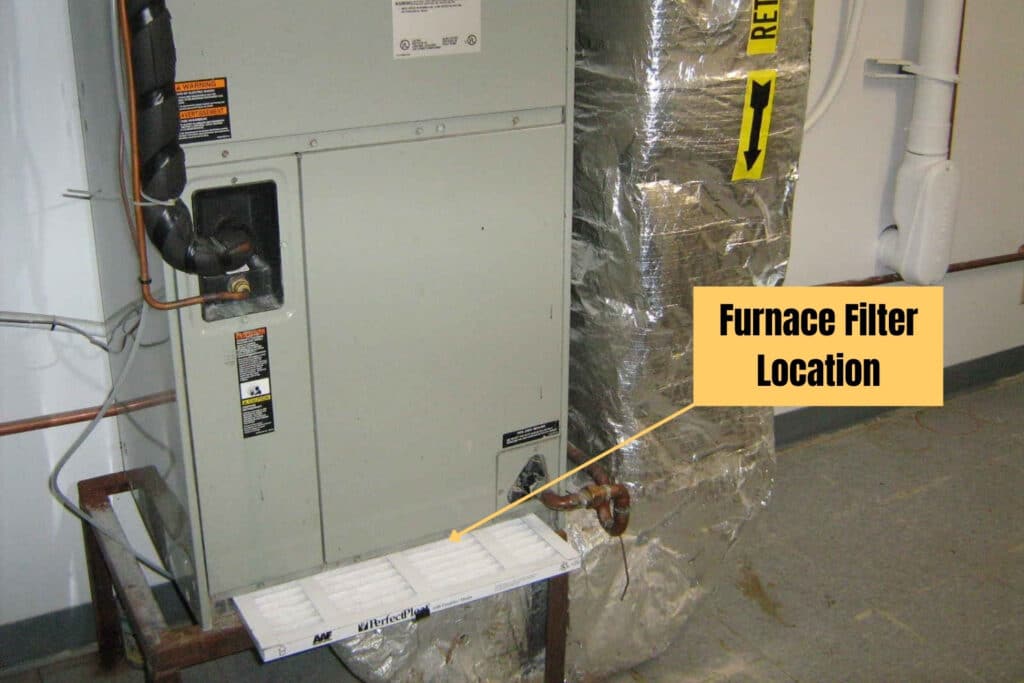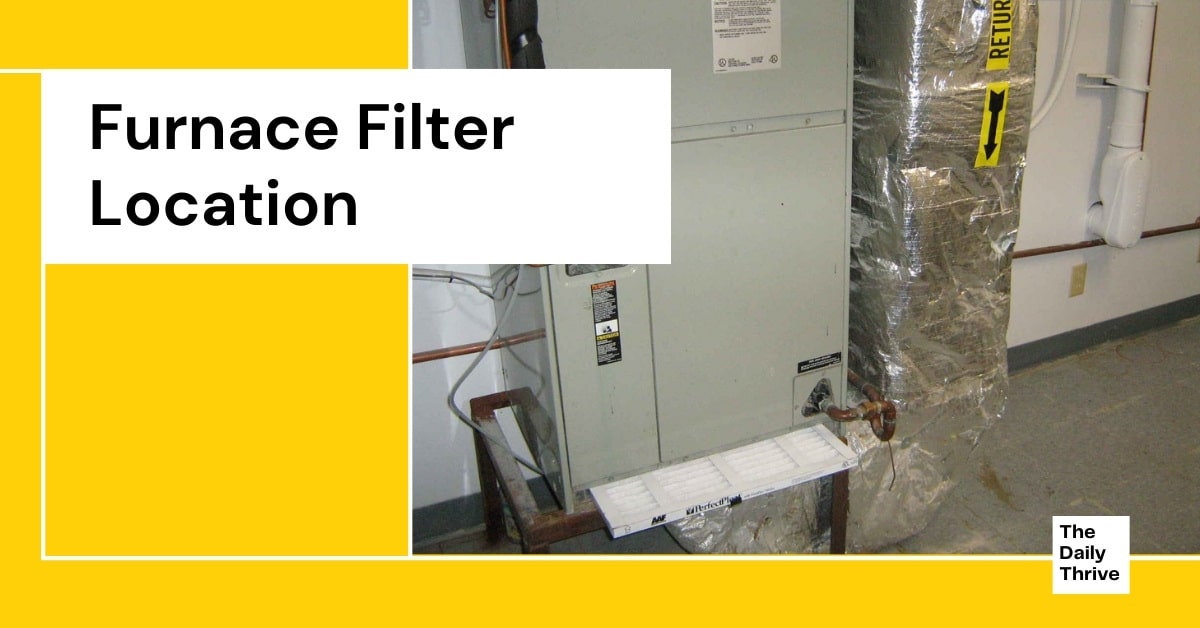One of the most frequently asked questions I get asked is where is my furnace filter located? You move into a new home or just decide to save some money and change your own furnace filter, and you can’t find it. You know it has to be there somewhere; every heating and cooling system has one. So, where is the furnace filter location?
Furnace filter location is not critical as long as it is somewhere before the fan. This applies to all heating furnaces (gas, oil and electric) and air conditioners.
I have been working in the HVAC industry for over twenty years, and sometimes furnace filters can be very difficult to locate; they can be located behind panels, inside duct openings that have been modified to accept a filter and are often hidden from view behind other equipment.
Keep in mind that the original purpose of furnace filters was to prevent anything from getting into the fan section and damaging components, so a furnace filter can be located anywhere upstream of the fan. Usually, manufacturers have a designated location in their air handlers for filters to be installed just before the fan.
Furnace filters will be located in the duct system somewhere upstream of the air handler. This is more common on older heating and air conditioning systems, but you just never know. What you need to do is start at the air handler and work your way back from there because the filter could literally be anywhere from there to the return air grill opening.

Today there are return air filters designed specifically to be installed in the return air grille. These filters have a knife-edge seal header incorporated in the design to provide a seal around the filter and reduce air bypass.
Once you know which duct is the return duct, you are in business. If you are not sure, just find the (there may be more than one) grill opening in your living space that draws air into it rather than blowing air out. This will be the return air duct, and the filter will be somewhere between this opening and the air handler.
If your system uses what is known as open return, meaning there is no return duct and return air is pulled from the living space directly into a return trunk attached to the air handler. In this case, you should be able to locate the furnace filter there.
Remember, there is always the possibility that there is no filter installed. It may have been removed at some time and never replaced for some reason. If this is the case, you should have the system checked to be sure the cooling coil has not been covered with dust. This will cause poor airflow and result in the evaporator icing up if it is bad enough. At the very least, it will have a negative impact on heating and air conditioning equipment efficiency.
Furnace Filter Direction
When installing a new furnace filter or air conditioner filter, it is important to know which way they are supposed to go. The reason this is so important is that most air filters are designed to work best when air flow is in a specific direction. With some media type filters, it doesn’t really matter, and with some, it makes a big difference.
With most pleated air filters, electrostatic air filters, HEPA filters, fiberglass panel filters and even electronic air filters, the direction of airflow is very important. Installing furnace filters the wrong way can have a very negative impact on air flow which reduces the efficiency of the equipment and can also reduce the usable life of the filters.
Usually, there are arrows on the frame of the air filter that indicates which direction the filter should go. This arrow points in the direction the air is flowing through the duct system. If you are unsure which direction the air will be flowing, there are a couple of other points of reference that you can use.
You can install the furnace filter so that the arrow is pointing toward the evaporator coil, which is located inside the air handler. If installing in a return grill, point the arrow toward the air handler.
The air handler houses the blower fan, which moves the air throughout your home. The arrow always points in the direction the air is flowing or toward the space that is being heated or cooled. If you make a mistake installing your new furnace filter, air flow can be drastically reduced within a couple of weeks because dust will collect in a way that will quickly reduce proper air flow through the filter.
Finally, once you find the furnace filter location, make sure you install it correctly.






